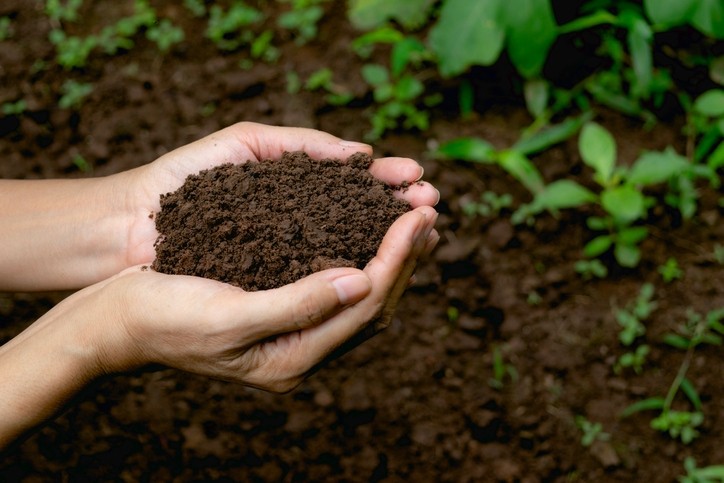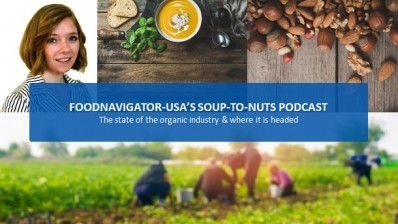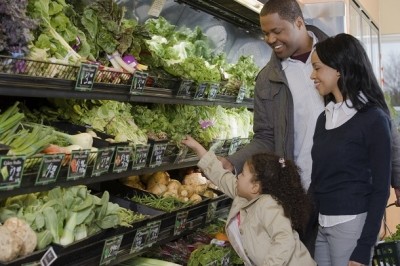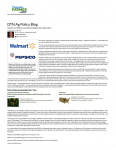As pressure to lower organic prices mounts, farmers look to 'creative' solutions to maintain their livelihood

“There has been and continues to be an extreme amount of pressure on price to be able to get pricing for organic produce, in my world, to be as close to the price as non-organic produce as possible, and that is creating a lot of challenges, but there are also a lot of ways to work through that to get as close as possible” while still maintaining farmers’ livelihoods, David Posner, president and CEO of Awe Sum Organics, told attendees at the Organic Trade Association’s policy conference in Washington, DC, late last month.
Ariane Lotti, who grows rice, grains and legumes in southern Tuscany at Tenuta San Carlo, said added pressure is also mounting in Europe, even though that market is a few years behind the US.
“I am seeing a lot of pressure from my buyers to lower the prices,” she said, hypothesizing that the impetus for the shift is retailers in the natural channel starting to feel the competition from the larger supermarket chains and larger buyers as they expand their organic offerings, including with private label options designed to sell at a lower price point.
Price isn’t the only place that organic farmers are feeling the heat. Doug Crabtree, the owner-operator for Vilicus Farms, said that buyers also are less willing to negotiate risk-sharing options with organic farmers.
“We are always keen to negotiate on more than price. We want to negotiate on terms and delivery times and quality specs and anything we can do to spread the risk and move that up the chain. Well, there is now tremendous pressure, I am feeling, to move that back down the chain and to put it all on the farm level,” he told attendees at the OTA conference.
“The buyers now want us to store [the product] until they want it, to ensure the exact quality spec they want, whether reasonable or not, and to take all the environmental risk.”
He explained that this pressure likely is stemming from consolidation in the sectors above the farm level, and it is “a determent to our entire community.”
Finding solutions
The panelists explained that the organic industry overall is excited to see the growing interest in organic and they want to expand access – which often means lower prices for the consumer – but they also want to protect the livelihoods of those growing the crops, a process that can be more challenging than conventional farming.
In the perishable produce sector, Posner said that many farmers try to maintain a profit margin by pre-selling a percentage of the crop before harvest at a price point that “pencils out” with enough room for error in the margins.
He also encourages them to work directly with retailers, and not distributors, when possible because retailers often are more open to partnering in a way that each side gets what they need. He explained that farmers should explain to retailers the challenges that they face, what a reasonable price point is based on actual costs and many times the retailer will be receptive and try to find a middle ground.
Farmers and brands should also work with retailers to ensure that message is also delivered to the shopper so that they understand why the price point is slightly higher. He added that many modern consumers are willing to pay more for a product that aligns with their values.
In return, he said, farmers need to do “everything we can with our growing methods and our fertilization practices post-harvest to get the highest yields we can per acre or hectare of fruit that is actually going to make spec.”
Pushing back
That said, he added, farmers need to push back if a retailer’s demand is too high or not feasible given the increased variability that organic farmers have compared to conventional farmers.
Lotti added that farmers also should push to find out who specifically sets the specs for buyers and find out why they are selecting certain attributes. This will allow farmers to better understand what the consumer wants and may provide a starting point for negotiations on other attributes that are just as valuable and potentially more feasible.
Crabtree also reiterated his strategy to negotiate not on price but on more “creative” standards, such as long-term commitments or cost- and risk-sharing.
Lotti seconded this explaining in Europe small groups across the supply chain are coming together with government entities to offset the higher costs of producing organic so that the price at shelf can be lower without compromising farmer’s livelihoods.



















